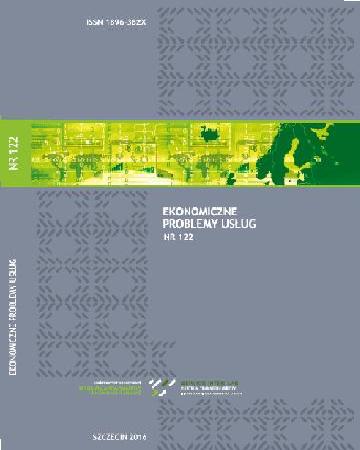
ISSN: 1896-382X
eISSN: 2353-2866
OAI
DOI: 10.18276/epu.2016.123-02



Issue archive /
nr 123 2016
Wpływ rozwoju technologii teleinformatycznych na funkcjonowanie warszawskiej Giełdy Papierów Wartościowych
(Development of information technologies and its impact on Warsaw Stock Market)
| Authors: |
Jacek
Buko
Uniwersytet Szczeciński Marta Rozwałka Uniwersytet Szczeciński |
| Keywords: | stock market informatization High Frequency Trading |
| Data publikacji całości: | 2016 |
| Page range: | 10 (19-28) |
Abstract
Technological progress and constant development of IT solutions have significantly influenced contemporary trading methods, especially trading on stock market. Most of financial instruments are dematerialized and the majority of transnational processes are based on sophisticated computer softwares. As a consequence, trading on capital market has become more intense on one side but on the other side, it gradually eliminates the direct participation of human beings in those processes. Technical specifications of internet connections, computer's performance and types of softwares are factors that mainly determine the procedure of investment and its outcome. Although, the potential beneficiaries of these changes seem to be almost only participants trading on the stock markets, the skeptics raise alarming and often legitimate questions that far-reaching elimination of human factor in this market may lead to dangerous and mostly unpredictable adverse effects.
Download file
Article file
Bibliography
| 1. | Adler J. (2012), Raging Bulls: How Wall Street Got Addicted to Light-Speed Trading, www.wired.com [dostęp 15.12.2015]. |
| 2. | Black F., Scholes M. (1973), The Pricing of Options and Corporate Liabilities, „Jour-nal of Political Economy”, www.cs.princeton.edu [dostęp 10.01.2016]. |
| 3. | Cipiur J. (2013), Milisekundy na wagę milionów dolarów, www.obserwatorfinansowy.pl [dostęp 14.01.2016]. |
| 4. | Czekaj M. (2012), Algozarabianie, czyli komputer jako inwestor, www.gazetatrend.pl [dostęp 12.01.2016]. |
| 5. | Dobosiewicz Z. (2013), Giełda. Zasady działania. Inwestorzy. Rynki giełdowe, War-szawa: Polskie Wydawnictwo Ekonomiczne. |
| 6. | Dobrowolski P., Ruszała K. (2012), Handel wysokich częstotliwości – nowy wiek, nowe pokolenie, gpwmedia.pl [dostęp 10.01.2016]. |
| 7. | Gandel S. (2012), Why Knight lost $440 million in 45 minutes, fortune.com [dostęp 14.01.2016]. |
| 8. | Glantz M., Kissell R. (2013), Multi-Asset Risk Modeling: Techniques for a Global Economy in an Electronic and Algorithmic Trading Era, San Diego: Academic Press. |
| 9. | GPW (2016), System notujący UTP, www.gpw.pl [dostęp 10.01.2016]. |
| 10. | Grabowski J. (1996), Publiczny obrót papierami wartościowymi. Ustrój prawny i procedury, Warszawa: Wydawnictwa Prawnicze PWN. |
| 11. | Kochan K. (2006), Fortex w praktyce. Vademecum inwestora walutowego, Gliwice: Wydawnictwo „Helion”. |
| 12. | Komajda E. (2003), Rynek papierów wartościowych. Wybrane zagadnienia, Warsza-wa: Wyższa Szkoła Handlu i Prawa im. Ryszarda Łazarskiego. |
| 13. | Kozłowska K. (2012), Błędy wysokiej częstotliwości, www.obserwator |
| 14. | Meyer G., Massoudi A., Stafford P. (2015), Casualties mount in high-speed trading arms, www.ft.com [dostęp 06.01.2016]. |
| 15. | NIK (2015), Realizacja przez podmioty państwowe zadań w zakresie ochrony cyber-przestrzeni Rzeczypospolitej Polskiej – kontrola planowa nr P/14/043 2015, Warsza-wa: Najwyższa Izba Kontroli. |
| 16. | Shobhit S. (2015), The World Of High Frequency Algorithmic Trading, www.investopedia.com [dostęp 10.01.2016]. |